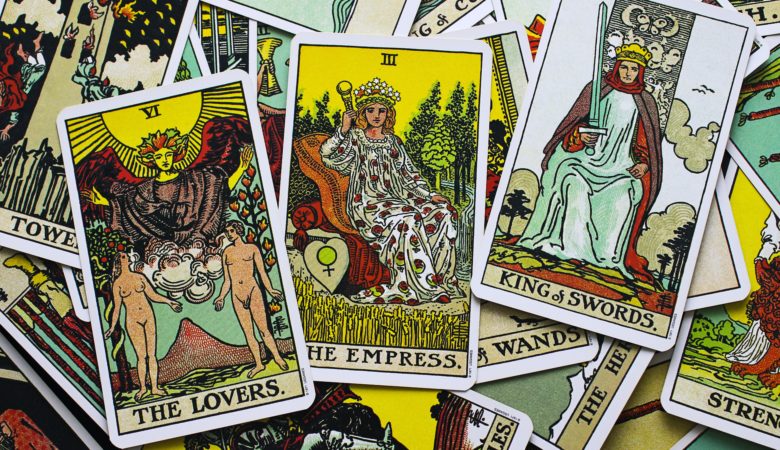How to Use Tarot Decks as a Psychological and Spiritual Tool

You’d have to be living under a rock to miss how popular tarot is these days. Maybe you have your own deck, or have been thinking about getting a reading from someone else. You might even know that the Death card doesn’t mean you’re about to recreate your own version of Final Destination.
Whether you believe in a connection to a higher power or you just want to gorge yourself on highly symbolic art, tarot has something for everyone—if you know how to use it.
The Fool’s journey
Traditional tarot decks are made up of 78 cards: 22 major arcana, which tell the story of the Fool’s journey, and 56 suit cards. The suits correspond to the elements: water (cups), air (swords), fire (wands) and earth (pentacles/coins). The major arcana depicts major events in one’s life, while the suits describe people, events, emotions and concepts you might encounter every day.
The Fool’s journey starts with the Fool (the equivalent of an innocent, newborn baby), and progresses through major archetypes and events that shape our world. For example, the Empress and the Emperor represent traditional feminine and masculine, mother/father relationships, while Death represents endings and rebirth. The cards progress until Judgement—a review and release of everything that has come before—and finally the World, which is a “graduation” of sorts.
Symbolism
Tarot decks are rich with symbolism, including astrological, numerological and artistic symbols. You’ll see everything from lions and lobsters to stars and snakes—and everything has as much or as little meaning as you want it to. Carl Jung described tarot as consisting of “the archetypes of mankind,” where the images may trigger certain thoughts, memories or images.
In other words, you can use tarot cards to work through your own psychological or spiritual development. You don’t have to believe that any unseen force is controlling the cards—although many people do. They might believe it’s their higher self or external forces.
If you want to use tarot as a way to delve deep into your own psyche, or develop your intuition, you can start by examining the cards and seeing what the art and symbolism says to you. It’s okay if you need to refer to books or websites—maybe one card gives you a gross feeling and you’re not sure why. Look it up! The trick is to trust your intuition—that your subconscious is reacting to the art and the symbols you see.
Asking questions and telling a story with tarot
Reading tarot is like reading a story. The cards are laid out in certain positions, called “spreads.” You use the positions (such as past, present, future) and the card meanings or symbolism to tell the story.
When you want to do a reading, think of an open-ended question. Tarot works best when you ask “how” or “why.” Pick a spread that works for your question, then shuffle the cards and lay them out.
Once you have the cards laid out, take a few minutes to look at the images in front of you. Do you see a theme, like water (emotions), air (thoughts and ideas), earth (money and stability) or fire (creative potential)? Are the figures facing each other or turned away? Do any of the images bring something to mind? For example, maybe you remembered your fire-and-brimstone religious Grandpa when you saw the resurrected people rising from the dead in the Judgment card, or maybe the figures on the Two of Cups remind you of your first kiss. Honor those first impressions by jotting them down, then sit with the cards a little longer.
Understand your own spiritual symbolism
When you look at tarot as a story, you can see not only themes, but characters and cause and effect. If a particular image really disturbs or excites you, don’t take that as spiritual gospel: think about why it’s so important.
Delving into your own thought processes is just as important as which cards fall out of the deck. What do these images mean to you—and what would you think, feel or do if they were true? That’s how you’ll eventually come to the “answers,” whether that’s “I’ll meet my soulmate after grad school” or “I’m still not over that friend breakup from a decade ago.”
Like hammers, religion and therapy, tarot is a tool. What you accomplish depends on how you use it. If it resonates, it might just be the most interesting tool for spiritual and psychological development you’ve ever tried.

